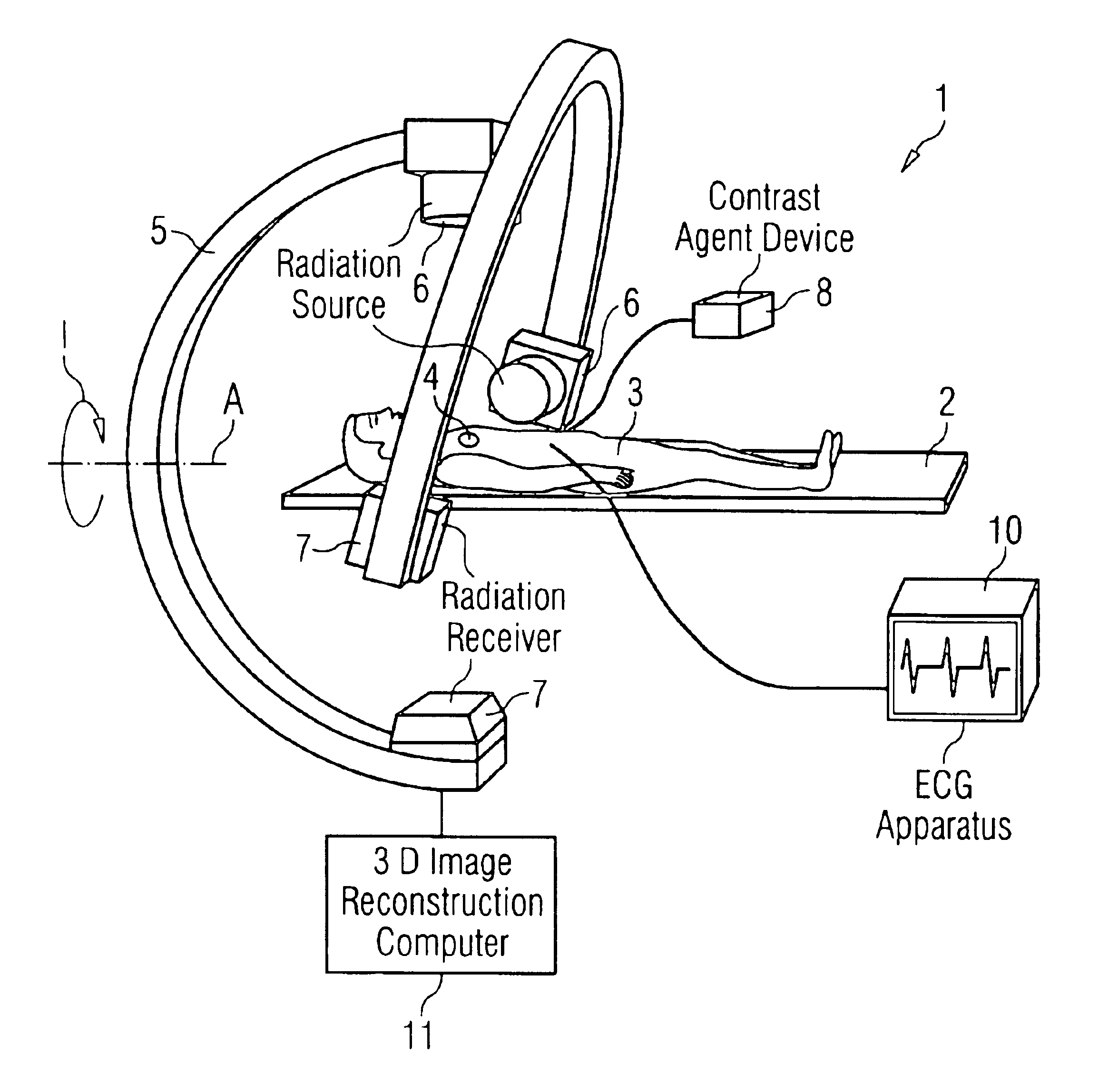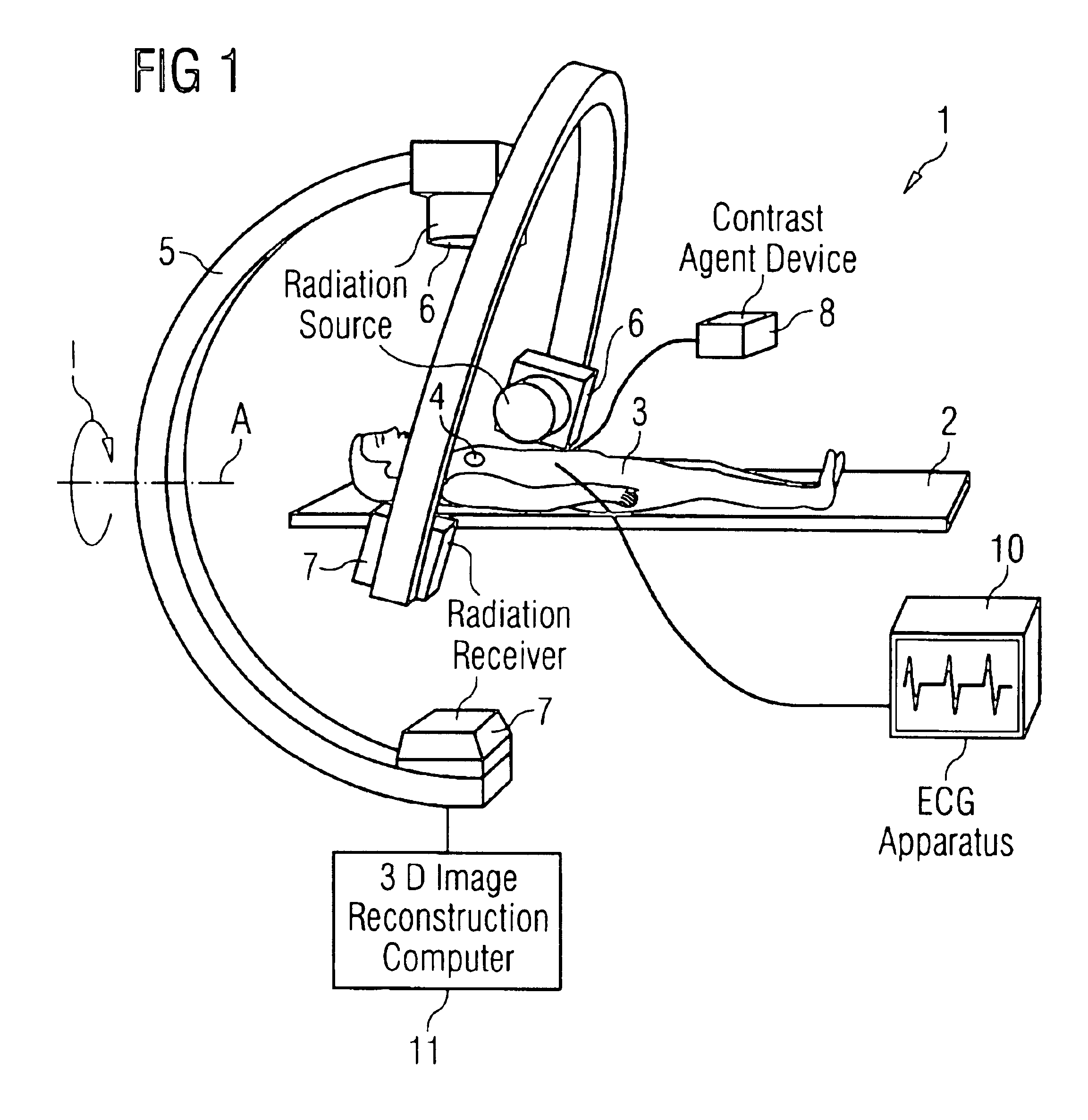Method and apparatus for three-dimensional imaging of a moving examination subject, particularly for heart imaging
a three-dimensional imaging and examination subject technology, applied in the field of three-dimensional imaging of moving examination subjects, can solve the problems of not being able to reconstruct the three-dimensional presentation of the diagnostic image, and the current inability to be don
- Summary
- Abstract
- Description
- Claims
- Application Information
AI Technical Summary
Benefits of technology
Problems solved by technology
Method used
Image
Examples
Embodiment Construction
[0023]FIG. 1 shows an inventive medical examination apparatus 1 having a patient bed 2 on which a patient 3 whose heart 4 is to be examined lies in the illustrated exemplary embodiment. A C-arm 5 with a radiation source 6 and a radiation receiver 7 is provided for the examination, this being rotatable around the axis A, as indicated by the arrow 1. The radiation source 6 and the radiation receiver 7 thus rotate around the examination region, i.e. around the heart 4 in this case.
[0024]Contrast agent is administered to the patient with a contrast agent device 8 via a contrast agent line 9. This contrast agent is preferably arterially administered, so that it is already in the region of the heart 4 immediately after having been administered and is still present in adequate concentration. Further an ECG apparatus 10 is provided with which a ECG can be registered.
[0025]For the examination, the C-arm 5 rotates around the axis A during the time wherein the contrast agent is in the examinat...
PUM
 Login to View More
Login to View More Abstract
Description
Claims
Application Information
 Login to View More
Login to View More - R&D
- Intellectual Property
- Life Sciences
- Materials
- Tech Scout
- Unparalleled Data Quality
- Higher Quality Content
- 60% Fewer Hallucinations
Browse by: Latest US Patents, China's latest patents, Technical Efficacy Thesaurus, Application Domain, Technology Topic, Popular Technical Reports.
© 2025 PatSnap. All rights reserved.Legal|Privacy policy|Modern Slavery Act Transparency Statement|Sitemap|About US| Contact US: help@patsnap.com



